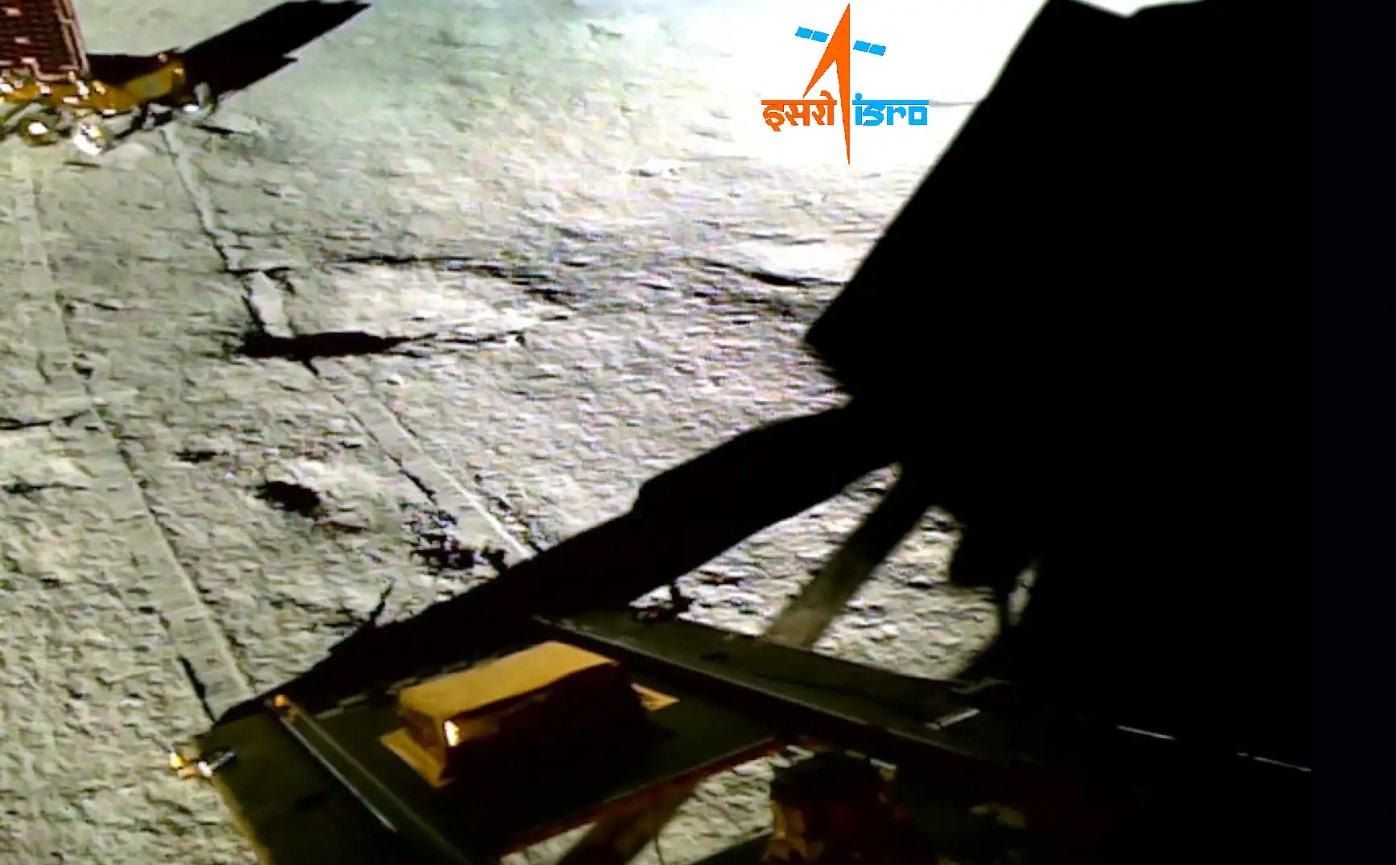India’s Chandrayaan-3 lunar lander and rover are quickly checking all the boxes of planned tasks for the mission. Time is short, as the duo are expected to last just 14 days on the Moon’s surface, or one lunar day, the amount of time the solar-powered equipment is built to last. Therefore, we likely only have until about September 6 or 7 to follow any action. But what a joy to watch the updates coming in from ISRO, the Indian Space Resource Organization.
Last week, India became only the fourth country to land on the Moon, and the first to ever make a soft landing near the Moon’s south pole. Shortly after touchdown, the Vikram lander began sending back images from its surroundings. Then, the six-wheeled rover named Pragyan rolled down a ramp to begin its explorations, looking for evidence of ice and other minerals.
One video shows the rover “doing a donut” – or spinning around in a circle on the lunar surface (although ISRO phrased it, “It feels as though a child is playfully frolicking in the yards of Chandamama, while the mother watches affectionately.”) The frame rate from the rover is quite low, so thankfully video and image editing expert Simeon Schmauss was able to upscale the data and provide an improved version.
The 57-lb (26 kg) rover also came upon a 13-foot (4-meter) shadowed crater of unknown depth that could have posed an extreme hazard for Pragyan if it had entered it. Thankfully, a team on the ground saw the danger via the rover’s navigation camera. The rover moves at just 10 centimeters per second to allow ground control to monitor the terrain, as well as to minimize any vibrations on the vehicle from the rough lunar terrain.
“On August 27, 2023, the Rover came across a 4-meter diameter crater positioned 3 meters ahead of its location,” ISRO wrote in a post on X, formerly Twitter. “The Rover was commanded to retrace the path. It’s now safely heading on a new path.”

Pragyan is studying the composition of the lunar surface, measuring the presence of water in the regolith, and gathering data on the history of impacts in the region as well as the Moon’s tenuous atmosphere. And the rover hit paydirt.
This week, ISRO announced the rover had confirmed the presence of sulfur and several other elements. Pragyan’s laser-induced spectroscope detected the sulfur, as well as aluminum, iron, calcium, chromium, titanium, manganese, oxygen and silicon on the lunar surface.
The rover “unambiguously confirms the presence of sulfur,” ISRO said. It is also searching for signs of frozen water. Water ice could be a source of oxygen, fuel, and water for future missions, or perhaps even for a future lunar base or colony at the Moon’s south pole.

Meanwhile, the Vikram lander is using its suite of instruments to measure the thermal conductivity and temperature of the lunar surface, search for seismic activity around the landing site, and estimate the near-surface plasma density over time.

